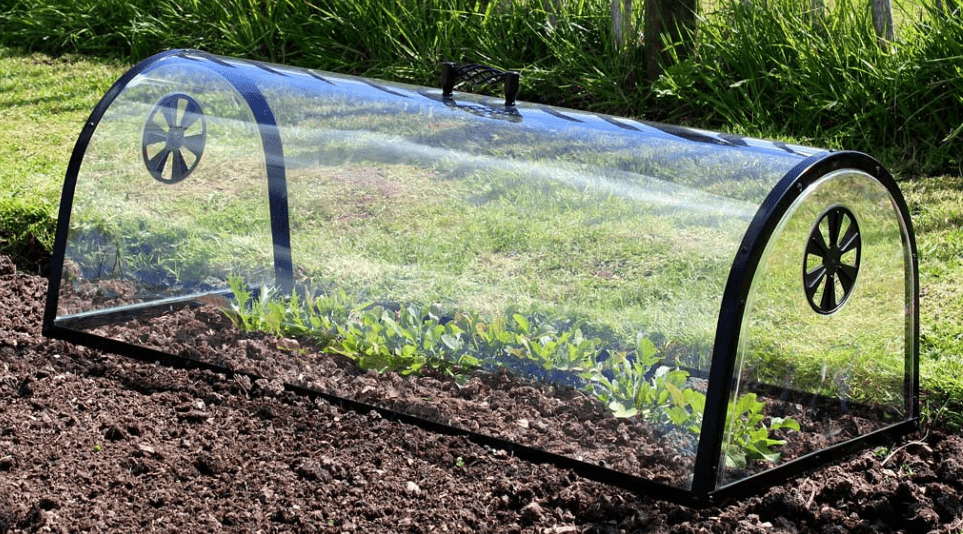
Cloches Garden: The Ultimate Guide to Protecting Your Plants
Creating a cloches garden is an excellent way to protect your plants from harsh weather conditions, pests, and to extend your growing season. Cloches, which are small, portable protective structures, have been used for centuries by gardeners to create optimal microenvironments for delicate plants. In this guide, we’ll explore the various types of cloches, their benefits, and how to effectively use them in your garden
Table of Contents
ToggleUnderstanding Cloches
A. What are Cloches?
Cloches are protective coverings that are placed over plants in the garden to provide shelter from the elements, pests, and other potential threats. They can be made of various materials such as glass, plastic, or fabric and come in a variety of shapes and sizes to accommodate different types of plants.
1. Different types of cloches (glass, plastic, fabric, etc.)
There are several types of cloches available, including those made of glass, plastic, and fabric. Each type has its own benefits and drawbacks, so it’s important to choose the right one for your specific needs and plants. Glass cloches are durable and provide excellent protection from the elements, while plastic cloches are lightweight and easy to move around. Fabric cloches are ideal for creating a microclimate and providing protection from pests. Consider the needs of your plants and the conditions in your garden when selecting the type of cloche that will work best for you.
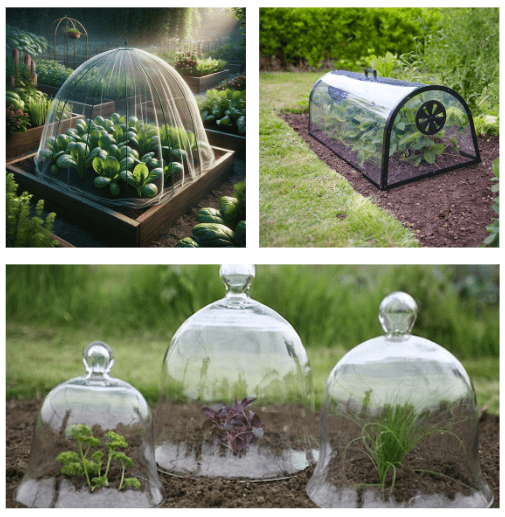
1. History of Cloches in Gardening
Cloches have been used in gardening for centuries, dating back to the 17th century in France. Originally, cloches were bell-shaped glass covers that were used to protect tender plants from frost. Over time, the design and materials used for cloches have evolved, with plastic and fabric cloches becoming popular options as well. Today, cloches are an essential tool for gardeners looking to provide protection for their plants and extend the growing season.
Benefits of Using Cloches
A. Frost Protection
Cloches provide a protective barrier for plants, helping to keep them safe from frost and cold temperatures. This can be particularly useful in the early spring or late fall when temperatures can fluctuate and potentially harm delicate plants.
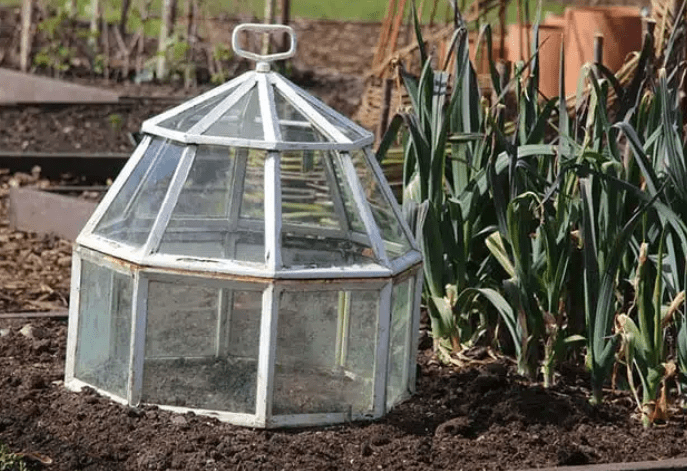
B. Pest Control
Cloches can also help to keep pests at bay. By creating a microclimate around your plants, you can deter insects and other pests from damaging your garden.
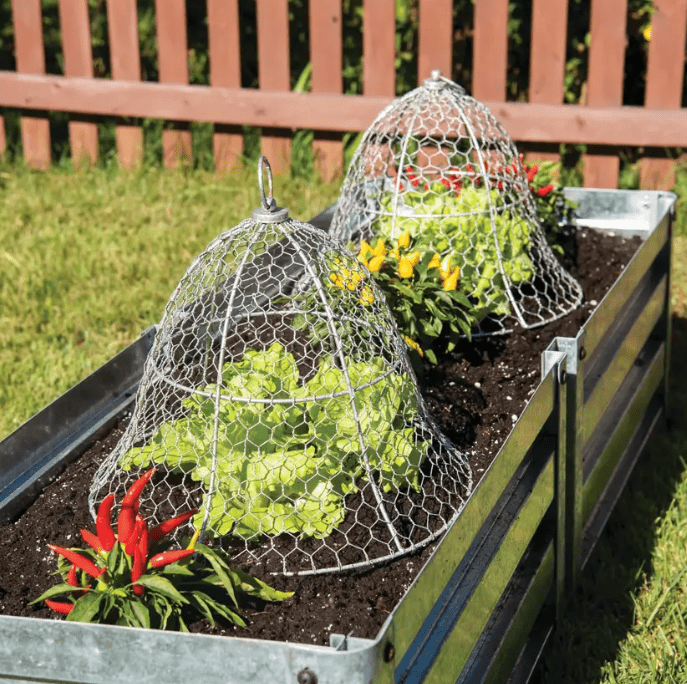
C. Climate Control
Fabric cloches are especially effective at creating a microclimate, as they allow sunlight, moisture, and air to reach the plants while still providing protection. This can be beneficial in controlling the temperature and humidity levels around your plants.
D. Improved Growth Conditions
Using fabric cloches can create improved growth conditions for your plants by controlling the microclimate around them. This can help regulate temperature and humidity levels, and also deter pests from damaging your garden. By allowing sunlight, moisture, and air to reach the plants while providing protection, fabric cloches can create an optimal environment for your plants to thrive.
Types of Cloches and Their Uses
A. Bell Cloches
Bell cloches are a type of fabric cloche that is shaped like a dome, providing protection for individual plants or small groups of plants. They work well for seedlings and young plants, as they can create a warm, humid environment that promotes growth. Bell cloches are also effective at protecting plants from frost and wind damage.
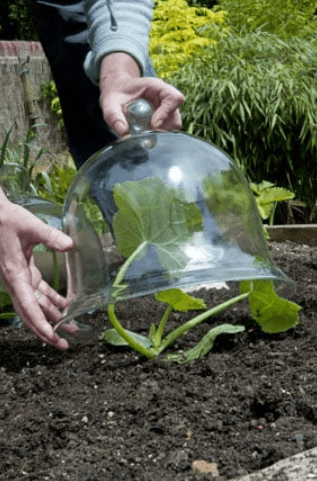
1. Pros and cons
Bell cloches have the advantage of providing individualized protection to plants, allowing them to thrive in a controlled microclimate. They are also easy to move around and can be reused for multiple seasons. However, one potential drawback is that they may not provide enough space for larger plants or multiple plants in a garden bed. Additionally, they may need to be monitored for adequate ventilation to prevent excess moisture buildup. Overall, bell cloches are a valuable tool for protecting and promoting the growth of delicate plants in your garden.
B. Row Cloches
Row cloches are another type of plant protection that can be used in the garden. They are long, tunnel-shaped structures that can cover an entire row of plants, providing protection from the elements and creating a warm, humid environment. This can be beneficial for promoting seedling growth and protecting plants from frost and wind damage. However, row cloches may be more difficult to move around and may not provide as much individualized protection as bell cloches. They can also be more difficult to store when not in use. Ultimately, the choice between bell cloches and row cloches will depend on the specific needs of your garden and the plants you are looking to protect.
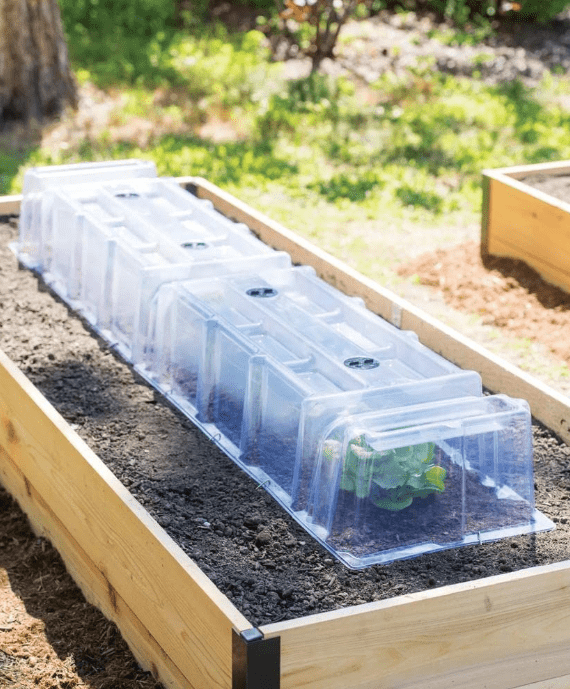
1.Pros and cons
Some pros of using row cloches include providing protection for an entire row of plants, creating a warm and humid environment, and promoting seedling growth. However, some cons to consider are that they may be more difficult to move around, may not provide as much individualized protection, and can be more difficult to store when not in use. Ultimately, it’s important to consider the specific needs of your garden and the plants you are looking to protect when choosing between bell and row cloches.
C. Tunnel Cloches
Some pros of using tunnel cloches include providing protection for a larger area of plants, creating a warm and humid environment, and promoting seedling growth. However, some cons to consider are that they may be more difficult to move around, may not provide as much individualized protection, and can be more difficult to store when not in use. Ultimately, the choice between tunnel cloches and other types of cloches will depend on the specific needs of your garden and the plants you are looking to protect.
D.Homemade Cloches
Homemade cloches can be a cost-effective and environmentally friendly option for protecting your plants. You can create your own cloches using materials such as plastic bottles, milk jugs, or even wire and plastic sheeting. This allows you to customize the size and shape of the cloche to fit the specific needs of your garden. Additionally, homemade cloches can be a great way to upcycle and repurpose materials that would otherwise be thrown away. By using homemade cloches, you can protect your plants from harsh weather and pests while also reducing your environmental impact. Plus, it’s a fun and creative DIY project that can add a personal touch to your garden. When it comes to protecting your plants, homemade cloches can be a practical and sustainable option to consider.
Choosing the Right Cloche for Your Garden
A. Factors to Consider
When choosing the right cloche for your garden include the size and shape of your plants, the specific weather conditions in your area, and the materials you have available for making the cloche. It’s important to make sure that the cloche will provide adequate protection for your plants while still allowing for proper airflow and sunlight. Additionally, consider the aesthetic appeal of the cloche and how it will fit into the overall look of your garden. With a little creativity and resourcefulness, you can create custom cloches that will help your garden thrive.
B. Material Comparisons
When it comes to materials for making your own cloches, there are several options to consider. Glass jars or bottles can be repurposed as cloches, providing both protection and a decorative touch to your garden. Plastic containers or even old CD cases can also be transformed into cloches with a little bit of creativity. For a more natural look, consider using wire mesh or chicken wire to create a more rustic and homemade cloche. Ultimately, the material you choose will depend on the specific needs of your garden and your own personal preferences. Experimenting with different materials can add a fun and unique element to your DIY project.
How to Use Cloches Effectively
A. Preparation
When using cloches to protect your plants, it’s important to prepare them properly for the best results. Clear any debris and weeds from the area where you will be placing the cloche. Make sure the soil is well-watered and properly fertilized to provide the best growing conditions for your plants. Place the cloche over the plant, making sure it fits securely and provides ample space for growth. Monitor the temperature and humidity inside the cloche regularly to ensure optimal growing conditions. With the right preparation, cloches can effectively protect and nurture your plants.
B. Installation
To install a cloche effectively, begin by selecting a sturdy and appropriate size cloche for your plants. Place the cloche over the plant, making sure it fits securely and provides ample space for growth. Ensure that the soil is well-watered and properly fertilized to provide the best growing conditions for your plants. Monitor the temperature and humidity inside the cloche regularly to ensure optimal growing conditions. Proper installation of the cloche will ensure that your plants are protected and able to thrive.
C. Maintenance
Maintaining a cloche is essential for the health and growth of your plants. Regularly check for any damage or wear and tear on the cloche, as well as any buildup of debris or pests. Clean the cloche regularly to remove any dirt or dust that may inhibit sunlight from reaching your plants. It’s also important to adjust the ventilation and temperature inside the cloche as needed to prevent overheating or excessive moisture. By properly maintaining your cloche, you can ensure that your plants receive the protection and nurturing they need to thrive.
Common Mistakes and How to Avoid Them
A. Overheating Plant
One common mistake when using a cloche is overheating your plants. To avoid this, make sure to monitor the temperature inside the cloche regularly, especially on hot days. You can adjust the ventilation to allow for better airflow and prevent the buildup of excessive heat. Additionally, consider removing the cloche during the hottest part of the day to prevent your plants from getting overheated. By being mindful of the temperature inside the cloche, you can ensure that your plants are protected without the risk of overheating.
B. Insufficient Ventilation
One common mistake when using a cloche is not providing enough ventilation for your plants. To avoid this, make sure to regularly check and adjust the ventilation settings to allow for proper airflow. This can help prevent the buildup of excessive heat and moisture, which can lead to plant diseases and stunted growth. Additionally, consider removing the cloche during the day or propping it open to allow for better air circulation. By providing sufficient ventilation, you can ensure that your plants thrive and stay healthy under the protection of the cloche.
C. Incorrect Timing
When using a cloche to protect your plants, it’s important to consider the timing of when to use it. Placing a cloche over your plants too early in the season can lead to overheating and stunted growth, while using it too late may not provide enough protection from frost or cold temperatures. It’s essential to monitor the weather conditions and the specific needs of your plants to determine the correct timing for using a cloche. Be sure to wait until the risk of frost has passed before using a cloche, and consider removing it during the warmer parts of the day to prevent overheating. Proper timing is key to effectively using a cloche to protect and nurture your plants.
Case Studies and Success Stories
A. Real-life Examples
Yes, proper timing is crucial when using a cloche to protect your plants. For example, in a real-life scenario, a gardener may have used a cloche too early in the season and noticed that their plants were struggling to grow or became overheated. On the other hand, another gardener may have waited too long to use a cloche and lost their plants to frost or cold temperatures. By understanding the specific needs of the plants and monitoring the weather conditions, gardeners can determine the correct timing for using a cloche and ensure the successful protection and growth of their plants.
B.Visuals
Visuals can also help to illustrate the importance of proper timing when using a cloche. For instance, a before and after picture of plants with and without a cloche can show the impact of using it at the right time. Additionally, time-lapse videos can demonstrate how plants thrive and grow under the protection of a cloche when used at the correct timing. These visual examples can further emphasize the significance of timing in effectively using a cloche to nurture and protect plants.
In conclusion, using cloches in your garden can be a great way to protect your plants and extend your growing season. By following the tips and advice in this guide, you can ensure that your plants are well-protected and thriving. Whether you’re a beginner or experienced gardener, incorporating cloches into your gardening routine can make a significant difference in the health and success of your plants. So, don’t hesitate to give them a try and see the positive impact they can have on your garden.
Frequently Asked Questions (FAQs)
Cloches Garden is a comprehensive guide to protecting your plants from the elements and pests. It provides tips and techniques for creating a healthy and thriving garden.
The guide offers various methods for protecting plants, including using cloches, row covers, and other protective barriers. It also provides advice on natural pest control and creating a healthy growing environment.
Cloches are protective covers that are placed over individual plants to shield them from cold, wind, and pests. They can be made from glass, plastic, or other materials and help create a microclimate for the plant to thrive in.
Yes, the techniques and tips in Cloches Garden can be applied to a wide variety of plants, including flowers, vegetables, and herbs. The guide offers tailored advice for different types of plants and growing conditions.
Absolutely! Cloches Garden is designed to be accessible for all levels of gardening experience. It provides clear and practical advice that can be easily implemented by beginners and experienced gardeners alike.
Cloches Garden is available as a digital guide that can be purchased and downloaded online. It is also available in some bookstores and gardening centers.
Cloches Garden focuses specifically on the protection of plants, offering in-depth advice on creating a safe and nurturing environment for your garden. It is a comprehensive resource for plant protection techniques.
While the guide primarily focuses on outdoor gardening, many of the techniques and principles can be adapted for indoor plant care. The guide offers tips on protecting plants from indoor pests and creating optimal growing conditions.
